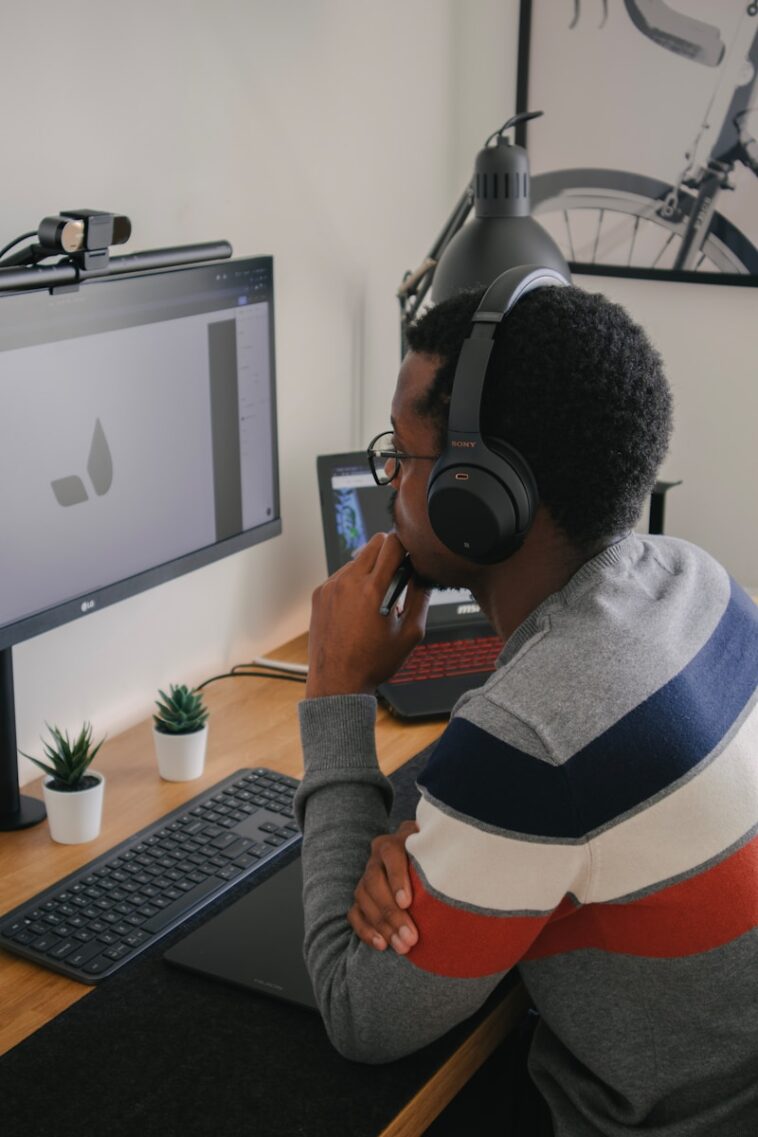When I was starting in my career, I poured hours into crafting the perfect resume—choosing the right font, aligning bullet points just so, tweaking every word. But over time, something surprising happened: my online presence started opening more doors than my resume ever did.
The way we work, network, and hire has changed. These days, your digital footprint—your LinkedIn, personal website, portfolio, social media, and even Google search results—can say more about you than any one-page PDF ever could. And that shift isn’t just happening in tech or creative fields. It’s everywhere.
If you’re still treating your online presence as an afterthought, it might be time to rethink your approach. Here’s why—and how to make it work for you.
Your Resume Only Tells Part of the Story
A resume is essentially a summary. It’s meant to be brief and focused. But that’s also its biggest limitation—it only shows what you’ve done, not who you are or how you think.
On the other hand, your online presence can show:
Your personality and communication style
Your real-world impact and interests
How you engage with your industry or community
Your work in context—especially for creators, developers, writers, and freelancers
Think about it. If someone Googles your name and finds a thoughtful LinkedIn post, a case study on your blog, or a GitHub repo you’ve built, they instantly get more insight into your skills than a bullet point saying “Proficient in Python” could ever provide.
Recruiters Will Look You Up
According to a survey by CareerBuilder, 70% of employers use social media to screen candidates during the hiring process—and 57% say they’ve decided not to hire someone based on what they found online.
That doesn’t mean you need to scrub every personal photo or hide your opinions. But it does mean being intentional about your digital footprint.
Here are a few quick tips:
Google yourself. See what shows up and update anything outdated.
Keep your LinkedIn fresh. Even if you’re not job hunting, it’s your online business card.
Think before you post. Ask yourself, “Would I be okay with a future boss seeing this?”
Highlight your work. Share projects, presentations, and progress—not just promotions.
Your Online Presence Builds Trust Before the First Conversation
When I’m hiring or collaborating with someone, I almost always look them up online before reaching out. And I know I’m not the only one.
If I see a consistent, thoughtful online presence—someone who shares relevant content, comments insightfully, or showcases their work—I feel more confident connecting with them. It’s like a silent interview that builds trust in advance.
This is especially true for freelancers, consultants, or business owners. Your digital footprint is often the first impression you make.
If it feels scattered, outdated, or non-existent, people may move on—no matter how strong your resume or portfolio is.
A Strong Online Presence Can Create Opportunities You Never Applied For
This one’s personal. More than once, I’ve had people reach out with job offers, freelance gigs, or podcast invites just because they stumbled on something I posted online.
The internet is a 24/7 networking event. Every blog post, tweet, or LinkedIn update is a chance to get noticed by the right person—someone who might be looking for exactly what you offer.
And here’s the best part: these opportunities often come without you applying. Your online presence can act like a magnet, pulling in the right kind of attention while you sleep.
It’s Easier to Start Than You Think
I get it—it can feel overwhelming to “build your online brand.” But it doesn’t have to be a massive overhaul. Start small and build momentum.
Here’s what I recommend:
1. Audit Your Current Presence
Search for yourself online. Look at your social profiles. Are they consistent? Up-to-date? Do they reflect who you are now?
2. Polish Your LinkedIn
Make sure your headline and summary tell a clear, compelling story. Add recent projects, certifications, or articles.
3. Create a Simple Personal Website or Portfolio
Even a one-page site with your bio, a photo, and some links to your work can go a long way. Tools like Carrd or Notion make it easy.
4. Share What You’re Learning
You don’t need to be an expert to post online. Share a challenge you overcame, something you read, or a tool you love. People appreciate honesty and realness more than polish.
5. Engage with Others
Comment on industry posts. Join communities. Celebrate others’ wins. This builds visibility and trust—without you needing to “self-promote.”
FAQs
What if I’m not in a creative or tech role?
Your industry doesn’t matter—people still look you up. Whether you’re a teacher, accountant, nurse, or engineer, showing professionalism and personality online can help you stand out.
Should I separate my personal and professional accounts?
It depends. Some people prefer separate profiles, especially on platforms like Instagram or X (Twitter). But even if you use one account, be mindful of what you post and who’s watching.
Is it too late to start building my presence?
Not at all. It’s better to start now than wait for the “perfect” time. Every post, comment, or update helps you build digital momentum.
What if I’m private and don’t want to post a lot?
That’s totally fine. You can still have a strong online presence by keeping your LinkedIn updated and creating a professional profile that showcases your work quietly but clearly.
Don’t Let Silence Speak for You Online
I’ve seen talented, hardworking people get passed over—not because they weren’t qualified, but because their online presence didn’t reflect who they really were.
In today’s world, your resume might get you a glance. But your online presence? That’s what builds interest, trust, and connection. It’s what makes someone want to learn more about you—even before you apply.
So if you haven’t Googled yourself lately, or your LinkedIn still says “seeking new opportunities” from two years ago, maybe it’s time to start updating.
Here’s my question for you: What story is your online presence telling right now—and is it the one you want people to hear?





GIPHY App Key not set. Please check settings